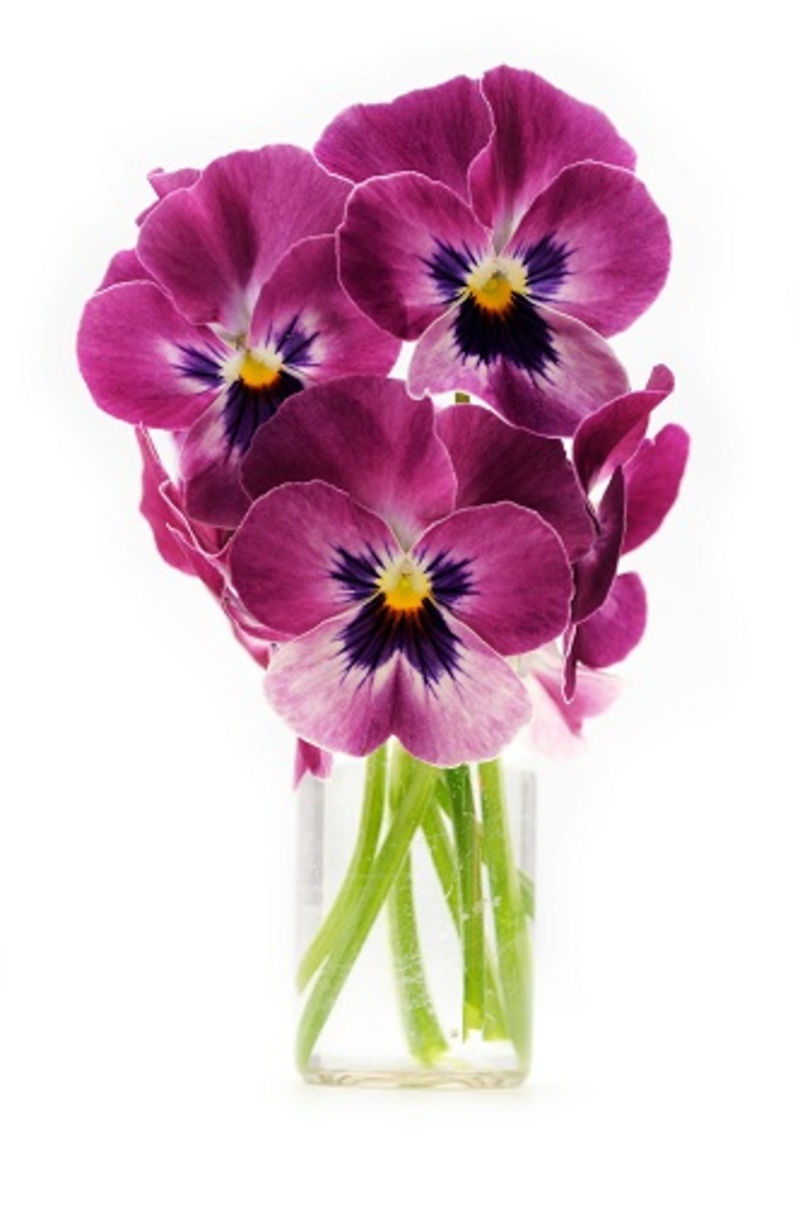Explore Sunflower Wonders: 8 Facts You May Not Be Aware Of
Posted on 13/08/2025
Explore Sunflower Wonders: 8 Facts You May Not Be Aware Of
Sunflowers, with their vibrant yellow petals and distinctive faces, have long captured human fascination. However, beyond their sunny appearances lies a world of sunflower wonders that many people are unaware of. From their unique behaviors to their remarkable uses, these golden blossoms truly are nature's marvels. In this article, we'll go beyond the basics and explore fascinating sunflower facts you may have never encountered before. Whether you're a gardening enthusiast, a nature lover, or simply curious, you're about to discover why sunflowers deserve a special place in our hearts and ecosystems.
Why Are Sunflowers So Special?
The sunflower (Helianthus annuus) has been celebrated across cultures and time for its beauty, utility, and symbolism. As you read on, you'll uncover sunflower wonders about its biology, history, ecological significance, and more. Let's begin our journey into the unknown world of sunflowers with eight surprising insights!

1. Sunflowers Exhibit Heliotropism: They Follow the Sun
One of the most captivating sunflower wonders is their behavior known as heliotropism. Young sunflowers literally track the movement of the sun across the sky from east to west during the day. This fascinating phenomenon ensures that their leaves and faces receive maximum sunlight, which is vital for photosynthesis and growth. At night, the flower heads return to their original eastward position, ready for the sunrise.
- Young sunflowers exhibit this movement prominently.
- Mature sunflowers typically face east and stop tracking the sun.
- The process is driven by differences in growth rates on opposite sides of the stem, influenced by sunlight.
Understanding heliotropism deepens our appreciation for sunflowers' adaptability and how intricately nature has programmed these wonders to optimize their growth.
2. Sunflowers Belong to a Diverse Family with Over 70 Species
The sunflower genus, Helianthus, is much more extensive than many realize. While the iconic annual sunflower is well known, there are over 70 species of sunflowers growing worldwide, primarily in North and Central America.
- Wild sunflowers showcase a variety of sizes, colors, and forms.
- Some sunflowers are perennials and can live for many years.
- Species like Helianthus maximiliani and Helianthus tuberosus (Jerusalem artichoke) offer edible tubers and additional ecological benefits.
This diversity highlights another aspect of sunflower wonders: their adaptability and ecological roles across different climates and environments.
3. Every Sunflower is Made of Thousands of Tiny Flowers
It may come as a surprise, but the large, showy head of a sunflower is not a single flower, but a collection of thousands of smaller flowers known as florets. This phenomenon, common among the Asteraceae or daisy family, is a key sunflower marvel.
- The outer petals? They are called ray florets and do not produce seeds.
- The center disc is packed with hundreds to thousands of disc florets that each have the potential to form a seed.
- This structure maximizes the plant's reproductive efficiency, attracting pollinators from far and wide.
Next time you gaze at a sunflower, remember the intricate sunflower wonders hidden within its disc.
4. Sunflowers Have a Spiraled Pattern Based on Fibonacci Numbers
Nature loves mathematics, and sunflowers are a vibrant example of this fact. The seeds in a sunflower's head are arranged in a spiral pattern that follows Fibonacci sequence rules. This arrangement isn't just beautiful--it's mathematically efficient.
- The number of spirals in each direction is typically a pair of successive Fibonacci numbers (e.g., 34 and 55, or 55 and 89).
- This configuration ensures that seeds are packed as tightly and efficiently as possible, maximizing the use of available space.
- It helps the sunflower produce the largest number of seeds per flower head.
Recognizing this mathematical logic is one of the most delightful sunflower facts for nature and math enthusiasts alike.
5. Sunflowers Play Important Roles in Phytoremediation
Among the many sunflower wonders is their incredible ability to clean up environmental toxins. Phytoremediation is the use of plants to remove, transfer, or neutralize pollutants from soil and water, and sunflowers are superstars in this field.
- Sunflowers have been used to extract heavy metals, such as lead, arsenic, and uranium, from contaminated soil.
- After the Chernobyl and Fukushima nuclear disasters, sunflowers contributed notably to the cleanup by absorbing radioactive isotopes from water and soil.
- Their fast growth and deep roots make them extremely effective in this environmental role.
This makes sunflowers not just beautiful additions to your garden, but also potent allies in healing and protecting our planet--a true sunflower marvel.
6. Sunflowers Are an Ancient and Highly Nutritious Food Source
Another noteworthy sunflower wonder lies in its history and provision as a food source. Sunflower seeds (and their oil) have nourished communities for thousands of years.
- Their domestication began over 4,500 years ago by Native Americans, long before the plant gained popularity in Europe and Asia.
- Sunflower seeds are rich in protein, healthy fats, vitamin E, selenium, and fiber.
- Sunflower oil is a staple in cooking worldwide, known for its light taste and high smoke point.
- Even the petals and sprouts are edible and nutrient-rich!
Today, sunflowers remain a vital crop globally. Their seeds and oil are valued not only for their taste but also for their excellent nutritional profiles, making them a sunflower wonder in every sense.
7. Sunflowers Have Powerful Symbolic and Cultural Meanings
Apart from their practical uses, sunflowers are steeped in symbolism and tradition. Many cultures have attached meaning to the sunflower's radiant beauty.
- In many places, sunflowers symbolize loyalty, admiration, and longevity.
- Their tendency to follow the sun led to a connection with positivity, spiritual faith, and hope.
- Artists like Vincent van Gogh immortalized sunflowers in their work, further cementing their cultural importance.
From festivals to fine art and folklore, the cultural legacy of sunflower wonders continues to inspire and uplift people around the world.
8. Sunflowers Support Biodiversity in Gardens and Beyond
Did you know sunflowers are powerhouses of biodiversity? Growing sunflowers is not just visually pleasing--it can greatly benefit garden and wild ecosystems.
- Sunflowers attract pollinators such as bees, butterflies, and even birds with their nectar and seeds.
- The large leaves and sturdy stalks sometimes provide shelter for insects, birds, and small mammals.
- Spent sunflower heads can be left in the garden as a natural bird feeder during fall and winter.
By including sunflowers in pollinator gardens and farmlands, individuals help conserve beneficial insects and birds--crucial allies in maintaining ecological balance.
Sunflower Facts: Bonus Surprises You Didn't Know
If those eight facts weren't enough to convince you of the wonders of sunflowers, here are a few more curious tidbits:
- Largest sunflower: The tallest recorded sunflower reached over 30 feet tall!
- Not all sunflowers are yellow; some come in shades of orange, red, and even deep purple.
- Sunflowers are among the fastest-growing plants, reaching maturity in just a few months.
- The scientific name, Helianthus, comes from Greek: "helios" (sun) and "anthos" (flower).

How to Grow Your Own Sunflower Wonders
Now inspired by the amazing sunflower wonders, you might want to plant your own. Here's what you need to know for a successful sunflower garden:
- Pick a sunny spot--sunflowers love full sun (6+ hours daily).
- Sow seeds directly outdoors after the last frost, 1-2 inches deep and 6 inches apart.
- Water regularly, especially during dry spells, but don't overwater.
- Tall varieties may need support to prevent bending or breaking.
- Harvest the seeds when the flower heads droop and the back turns brown.
Whether for their beauty, ecological value, nutritional benefits, or sunflower marvels revealed above, these golden giants are worthy of a place in every garden.
Conclusion: Sunflower Wonders Are Just the Beginning
From their mathematical seeds to powerful environmental impact, sunflowers are far more than meets the eye. The next time you spot a sunflower, remember you are witnessing a miracle of nature, science, and culture wrapped into a single, vibrant package. Sunflower wonders continue to unfold as researchers, gardeners, and dreamers celebrate these astonishing plants.
Continue to explore sunflower wonders in your own community. Plant a seed, share a fact, and let every sunflower spark curiosity about the natural world's remarkable secrets. For truly, the sunflower is an enduring symbol of life's diversity, resilience, and joy.
Latest Posts
Tips for Extending Poinsettia Freshness
Understanding Red Roses as Valentine's Day Gifts
What Does Your Birth Flower Reveal About Your Personality
Explore Sunflower Wonders: 8 Facts You May Not Be Aware Of
Uncover the Profound Symbolism and Colour Significance of Peony Flowers






